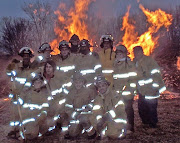Unlearning the Myths That Bind Us by: Linda Christensen
Premise:
· “secret education”
· Social blueprints
· Children’s literature books
· Sexism
· Racism
· Ignorance
· Social class
· Misinformation
· Stereotypes
· Cartoon shows/images
· World view
· Society
· Anger
· Media critiques
· Social inequality
· Industrially produced fiction
· Violence
· “handled”
· Women, people of color, and poor people’s roles in society
· Body type
· “good-natured” humor
· Self-image
· Materialism
· Frustration
· Unfairness
· “happy”
· “factories of cynicism”
Author’s Argument:
Christensen argues that our society’s culture is corrupting and colonizing the young minds of the younger generation of Americans by teaching them exactly how to act, live, and dream. This is known to adults as the “secret education” that is placed in numerous cartoon shows that can be found daily on every channel of the television world. All these shows for children only show a domination of one sex, one race, one class, and even one country over a weaker counterpart; Christensen supports that this should not be.
Evidence:
1. In the movie, Peter Pan the cartoon images taught many children all they knew on one particular area of information. These children learned at the age of three how to stereotype society and continue to do so currently. This is one of the most influential ways children learn how to stereotype individuals based on their gender, social class, and race.
2. Christensen looks at the way women, men, people of color, and poor people play in many cartoons. Many families are married and consist of a man and women and are white. Also majority of the families are either wealthy or from the upper middle class, this stereotypes those families who are from a different culture background/race and families that consist of one parent and have no money. Many deny that they have been manipulated in their young years, but in reality they are incorrect. Every child who watches television is manipulated and is taught how to stereotype people.
3. More evidence can be found when she talks about “A Black Cinderella? Give Me a Break” since if you think about the title, not many lead roles are from a different ethnicity. She questions if black, Asian, or Hispanic character would be the lead role or a servant and what does this conclude your children to think. She continues to state that in this case women of a different ethnicity feel left out and ugly.
Questions/Comments:
I found this reading easy to read and at first I was one of those people who denied being manipulated from watching cartoons as a young child. But as I continued to read and shows and movies that I have seen many times were used as examples and it hit me. I realized that I too was a victim of the television world. I found everything that was analyzed very interesting and once it was pointed out to me in black and white I became aware of it. This relates to S.C.W.A.M.M.P in the way that society is stereotypical buy culture. The power of culture is very strong among civilization and has power over all who view programs that discriminate against those who have different cultural backgrounds. Since most cartoon shows teach children how to be stereotypical this shows how the culture of power is dominated in America as being white.
Subscribe to:
Post Comments (Atom)



1 comment:
Nice connections to SCWAAMP. I know that it is hard to recognize that we are all influenced by the media!
Post a Comment